German Archaeological Institute
Deadline: November 30, 2024
In 2025, the German Archaeological Institute (DAI) will offer two post-doctoral research fellowships to AIA members based in North America who wish to use the library facilities of the DAI in Berlin.
Each fellowship is of a maximum duration of two months (the fellowship must take place in 2025), and includes travel expenses for the Fellow, a daily allowance, and residence at the DAI’s guest house. Fellows who wish to bring their families may find themselves alternate housing. In this case the DAI can provide a rental allowance.
Prerequisites for the fellowship are a Ph.D. degree (or its equivalent) and professional competence in archaeology. Applicants must be members of the Archaeological Institute of America and must be residents of a North American country. The principal requirement is a detailed research proposal of no more than three pages. While in residence, the Fellows will be expected to give a lecture for the DAI.
Fellows will be selected on the basis of scholarly promise as indicated by the applicant’s academic record, prior publications, and the merits of the proposed research project. The German Archaeological Institute supports affirmative action and equal opportunity in the selection of fellows.
Applications are due in November of 2024. The funding and selection of this award is handled exclusively by the DAI. Please direct any questions about the Fellowship or the application process to stipendien@dainst.de.
Applications, including a research proposal, a curriculum vitae, and a publication list should be addressed online to: stipendien@dainst.de
2023
University of Washington
For her research on d Funerary Amazonomachies in Pre-Roman Italy: Tomb Contexts, Materiality and Uses in Apulia and Etruria /em>e
2020
University of Oregon
For her research on Ethne on display. Representing Roman Provinces in the Provinces; fellowship tenure extended to 2021.
2020
Fordham University
For his research on The Art of Future Romans: Visions of the future from the last decades of kingdoms allied to the Roman Empire; fellowship tenure extended to 2021.
2019
ISAW, New York University
For his research on The City as Process: Negotiating the Global/Local in Roman North Africa. Fellowship tenure extended to 2021.
2019
Dartmouth College
For her research on Community Formation in Iron Age Ionia: Experience and Practice in Comparative Perspective
2017
Southern Illinois University
For his project: The death of myth on Roman sarcophagi
2017
University of Texas at Austin
For her research on The ceramics of Balis: Towards the recovery of lost heritage
2016
Brock University St. Catharines, Ontario
Carrie Ann Murrayhas been awarded a Study in Berlin Fellowship for 2016, in order to work on her project, “Worship at the Crossroads of the Mediterranean: Punic and Roman Cultural Interaction in the Volcanic Creater-Lake on Pantelleria”.
2016
Sultan Qaboos Centre
William Gerard Zimmerlewas awarded the DAI fellowship in 2016 for research at the Orient Department in Berlin. He received his Ph.D. in Mesopotamian Civilizations from the Department of Near Eastern Languages and Civilizations at the University of Pennsylvania, where he completed extensive research on the Arabian incense trade in the Near East Section of the University of Pennsylvania Museum of Archaeology and Anthropology. He has also earned a Masters degree in Religion and Semitic languages from Harvard University. He is currently a Research Fellow in Archaeology and Heritage at the Sultan Qaboos Centre in Muscat, Sultanate of Oman, where he has conducted extensive ethnographic research in Dhofar for over four years. During his time in Berlin, William used the extensive resources of the DAI library and the Vorderasiastiches Museum to complete a journal article for publication. He also met with local archaeologists to discuss materials for the completion of a forthcoming academic monograph on cuboid incense burners from southern Mesopotamia. He has been invited to lecture on this topic at the DAI Orient Department in January 2017.
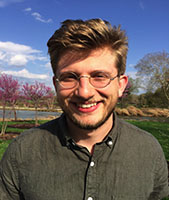
2015
Washington University
Nathaniel Jones was awarded the DAI Fellowship for Study in Berlin in 2015. He received a PhD in the History of Art from Yale University and currently holds a position as Assistant Professor of Art History and Archaeology at Washington University in St. Louis. While in Berlin Professor Jones will take advantage of the resources of the DAI library and archive and the archaeological collections of the city’s museums to conduct research for a book project exploring the relationships between perspectival constructions and narrative techniques in Roman art from the Republic to the late Em
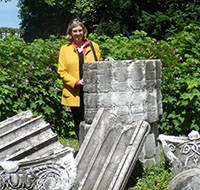
2015
Irene Bald Romano was awarded the DAI Fellowship to study in Berlin in 2015. She holds a Ph.D. from the University of Pennsylvania and was affiliated for many years with the University of Pennsylvania Museum of Archaeology and Anthropology and with the American School of Classical Studies at Athens. She currently holds joint appointments as Professor in the Art History Department and in the School of Anthropology at the University of Arizona. The focus of her research in Berlin was on two Roman monuments of the late 1st and early 2nd centuries AD from Puteoli on the Bay of Naples, of which one marble panel is in the University of Pennsylvania Museum and one in the Neues Museum in Berlin.
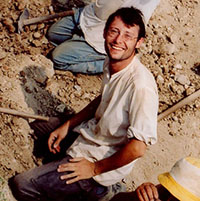
2014
University of Dayton
Dorian Borbonus was awarded the DAI fellowship to study in Berlin in 2014. He received a PhD in Mediterranean Archaeology from the University of Pennsylvania and holds a position as Assistant Professor of Ancient History at the University of Dayton. While in Berlin, Dr. Borbonus started a new project that follows up on his monograph on Roman columbarium tombs. This new project analyzes tomb monuments in Rome and its immediate surroundings during the period of Roman hegemony in the Mediterranean. It seeks to create the first historical narrative on the imperial capital that is based primarily on funerary culture, tracing the macroscopic change from a republican funerary landscape to an imperial one. This narrative is used to visualize the continuous growth and consolidation of Rome’s empire and its effects on an urban population that lived and operated close to its center of power.
2013
Oriental Institute, University of Chicago
Dr. Evans is a Research Associate with the Oriental Institute, and was a DAI Study in Berlin Fellow from October to mid-December 2013. While in Berlin she worked on a book-length study on Mesopotamian sacred gifts.

2013
Harvard University
Tiziana D’Angelo recently received her Ph.D. in Classical Archaeology from Harvard University. The 2013 DAI Fellowship for Study in Berlin will give her the opportunity to take advantage of the library facilities of the DAI Zentrale and of the archive and museum resources in Berlin. While in residence at the DAI, D’Angelo will focus on revising and expanding the scope of her dissertation, entitled Painting Death with the Colors of Life: Funerary Wall Painting in South Italy (IV-II BCE). This project examines how Italic and Greek peoples in South Italy combined images, colors, architecture, and death rituals to represent themselves powerfully and vividly before their own as well as other communities in a period when the entire Italic peninsula was undergoing a critical redefinition of its political and social order. On the one hand, this project investigates the painted tombs as exceptional first hand evidence to reconstruct the social and cultural identity of the Italic populations of South Italy, which is still largely unknown to us due to a significant lack of literary and epigraphic sources. On the other hand, it aims to shed new light on a fundamental artistic phenomenon, that is the diffusion of polychrome painting in the Mediterranean world during the late Classical and Hellenistic period.
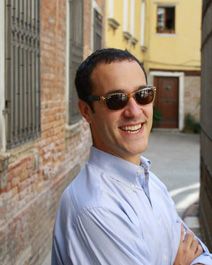
University of Pennsylvania
Seth Bernard recently completed his Ph.D. in Ancient History at the University of Pennsylvania. The AIA/DAI Study in Berlin Fellowship will allow Seth to take advantage of the DAI library and archives in Berlin to continue work on two projects relating to the creation and afterlife of Mid-Republican Rome. The first is a monograph entitled Building Republican Rome, which extends from his doctoral thesis and attempts to understand how Rome organized and paid for the considerable amount of labor involved in the creation of the Mid-Republican city (390-168 B.C.). This project traces the fundamental connection between urban growth and economic development by viewing the architectural production of Republican Rome as a process on a human scale and thus intrinsic to our understanding of coeval socioeconomic developments. The second project is a series of articles on the afterlife of Republican Rome and its importance to the evolving study of Roman topography from the Medieval period to the 19th century. In particular, this second project investigates how later interest in pre-Imperial Rome has necessarily approached the subject through a combination of literary and archaeological sources, and how cultural memory has conditioned the dialogue between these two bodies of evidence.
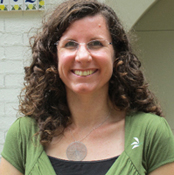
The College of William and Mary in Williamsburg
Molly Swetnam-Burland is Assistant Professor of Classical Studies at The College of William and Mary in Williamsburg, Virginia. She is currently at work on a manuscript treating the Roman interest in Egyptian culture after the battle of Actium ‚Äì including the importation of Egyptian obelisks and sculptures and their ‘afterlives’ in Roman contexts. In Berlin, she will work at the library of the DAI Zentrale and have the chance to study material in the √Ñgyptisches Museum und Papyrussammlung. Her published work includes articles in the American Journal of Archaelology and Art Bulletin.
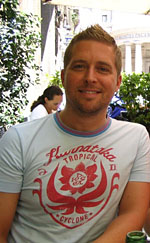
Northern Illinois University
Sinclair Bell is Assistant Professor of Art History at the School of Art at Northern Illinois University. The research he will carry out in Berlin is part of a larger project on the Roman circus, which will be published as a broad-ranging, interdisciplinary volume which will draw connections between texts, inscriptions, and visual and material cultural related to the sport of chariot racing and associated events held in the circus.
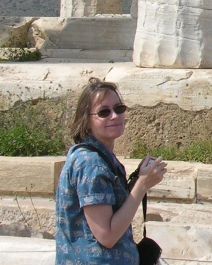
2010
University of Florida
The 2010 Fellowship recipient is Barbara Barletta, with the School of Art and Art History of the University of Florida in Gainesville. The research she will carry out in Berlin is part of a larger project involving the study and publication of the remains of the Temple of Athena at Sounion (Attica, Greece).”My book will present for the first time all of the evidence for this important temple, which stands at the forefront of the architectural change in Athens from strictly Doric to both Doric and Ionic orders. The Temple of Athena played a role also in the Roman period, when it was dismantled and many of its parts were moved to the Athenian Agora, to be re-erected in a prominent location.”
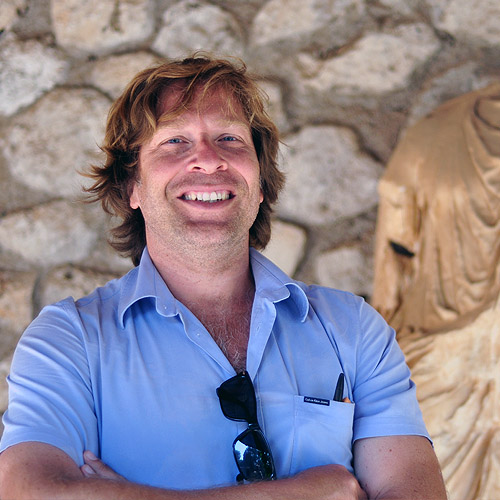
2008
Case Western Reserve University
The first DAI Fellowship winner in 2008 was Andrea De Giorgi, currently a visiting assistant professor in the Department of Classics at Case Western Reserve University and co-director of the Isparta Archaeological Project, an intensive survey investigating northern Pisidia, Turkey. The DAI Fellowship made it possible for De Giorgi to take advantage of the DAI Zentrale facilities during June and July.While in Berlin, De Giorgi worked on a study of the Cilician city of Anazarbos, with focus on the structural transformations that its cityscape underwent between the third and sixth centuries A.D. From being neokoros and the object of various building programs under the Severans, Anazarbos’ city plan and grid were drastically re-configured in the following centuries as a result of military vicissitudes and religious pressures. Because of this, Anazarbos offers a unique opportunity to study a city’s transition into the post-classical age as well as the agencies that shaped it in fundamental ways. This work will shortly appear in a monograph edited by the directors of the Anazarbos project.
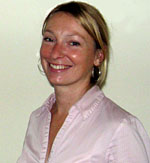
2008
Evergreen State College
The second DAI Fellowship winner in 2008 was Ulrike Krotscheck. She recently received her Ph.D. from Stanford University and currently holds a tenure-track position at the Evergreen State College in Olympia, WA. The DAI Fellowship enabled Krotscheck to use the library in the Berlin Zentrale in July and August. It also facilitated her collaboration with Dr. Udo Schlotzhauer of the Eurasien Abteilung in Berlin. Krotscheck’s research focuses on archaic Mediterranean trade and colonization in the Western Mediterranean. Specifically, her recent research has included neutron activation analyses (NAA) of the so-called “Ionian Cup‚” type B2, from archaic merchant shipwrecks, and the construction of a framework of trade and exchange in the 6th century BCE Mediterranean.The DAI Fellowship allowed Dr. Krotscheck to work on two articles expanding on her dissertation. The first will be the publication of the NAA results conducted by M.Glascock and J.R. Ferguson at the University of Missouri Research Reactor Center. The second one was conceived after a visit with Prof. Dr. H. Mommsen at the Helmholtz-Institut f√ºr Strahlen- und Kernphysik at the University of Bonn. This will present the results of NAA trace element analyses conducted in Bonn and an evaluation of the production and distribution patterns of pottery through maritime trade routes.
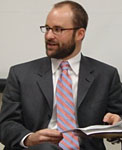
2007
College of Charleston
The DAI Fellowship winner in 2007 was Professor Matthew Canepa from the College of Charleston, Department of Art History, Programs in Archaeology and Asian Studies. A specialist in the art and cultures of the late Roman Empire and Pre-Islamic Iran, Canepa’s research focuses on cross-cultural interaction in the ancient world. His forthcoming book entitled The Two Eyes of the Earth (University of California Press) will be the first to analyze the artistic, ritual and ideological interactions between the Roman and Sasanian empires in a comprehensive and theoretically rigorous manner. The Deutsches Archäologisches Institut (DAI) awarded Canepa the 2007 North American fellowship in support of his next large-scale project: Iran between Alexander and Islam, a book-length examination of Middle Iranian art and the global idea of Iranian kingship. This project considers the reciprocal vocation of art and ritual in expressing power among ancient Iranian peoples and empires both within and beyond the geographical boundaries of present-day Iran (including the Parthians, Scythians, Kushans, and Sasanians) from the fall of the Achaemenid Empire in the fourth century B.C. through the advent of Islam in the seventh century A.D. While in residence at the DAI, Canepa’s project benefited from the opportunity to consult one-on-one with the excavators of such important sites as Takht-e Solayman and Firuzabad, as well as the library and museum resources of Berlin. (Photos courtesy Matthew Canepa)
Notifications